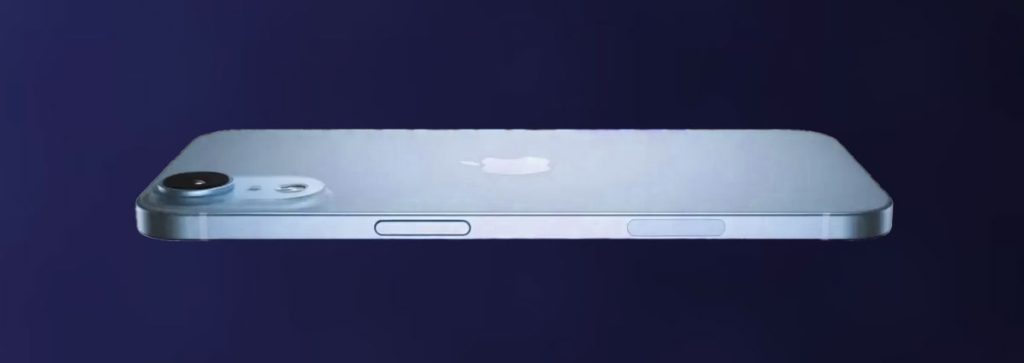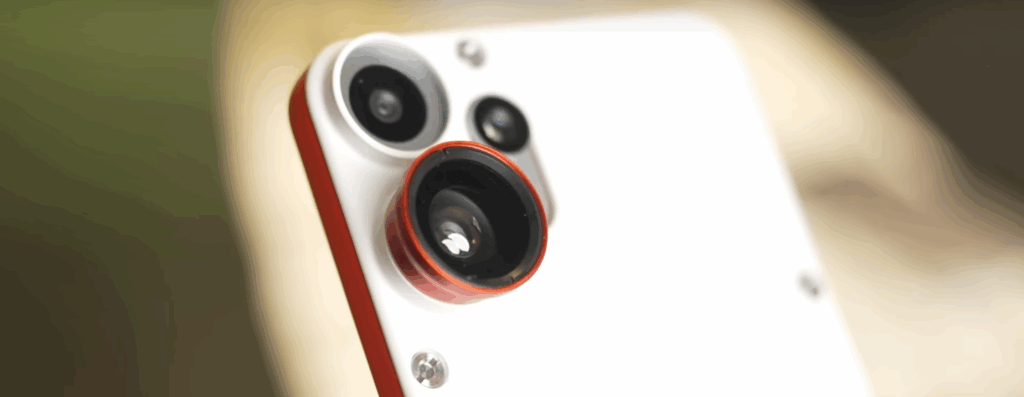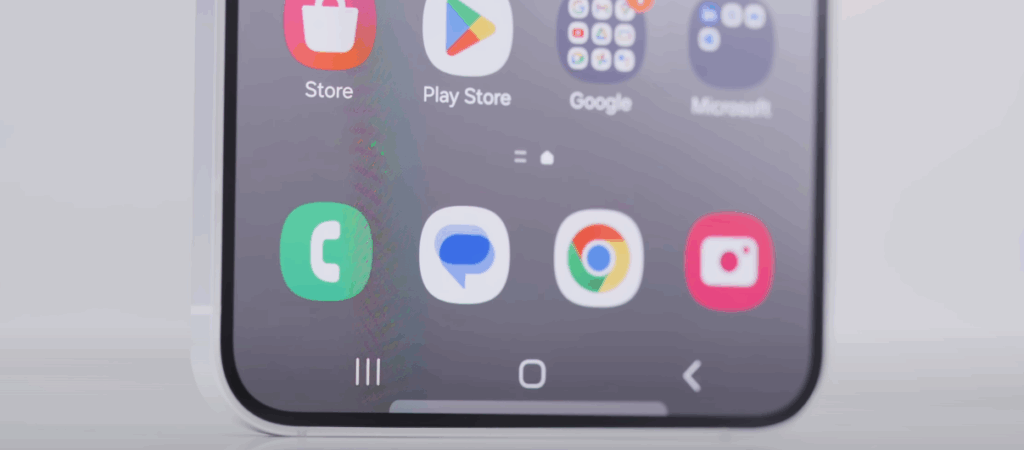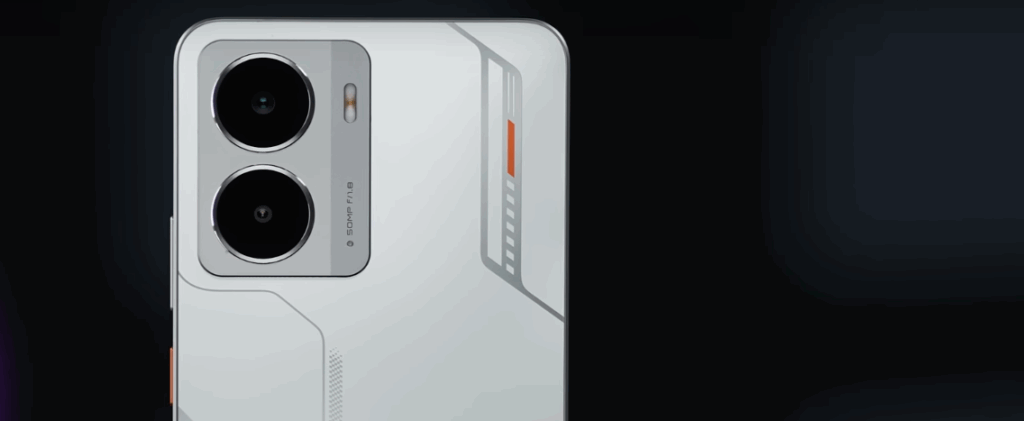
Introduction
Apple is preparing to shake up the smartphone industry once again with the highly anticipated iPhone 17 Air, set to launch in September 2025. This groundbreaking device represents Apple’s boldest design departure in years, focusing on an ultra-thin profile that could revolutionize how we think about premium smartphones. With rumors swirling around its innovative features and sleek design, the iPhone 17 Air is positioned to replace the Plus model and capture the attention of tech enthusiasts worldwide.
📌 Key Specs at a Glance
| Features | Specifications |
|---|---|
| Display | 6.6-inch LTPO OLED with ProMotion (1-120Hz) |
| Thickness | 5.5mm at thinnest point |
| Processor | A19 chip |
| Camera | Single rear camera with wide camera bar |
| Build Material | Aluminum frame with anti-reflective glass |
| Authentication | Face ID with Dynamic Island |
| Special Features | Always-On Display, ProMotion technology |
| Expected Price | $979 (starting price) |
🎨 Design & Build Quality
The iPhone 17 Air’s most striking feature is its incredibly slim profile, measuring just 5.5mm at its thinnest point. This represents a massive reduction from current iPhone models, with the iPhone 16 Pro measuring 8.25mm thick. Apple’s commitment to thinness surpasses even their previous record-holder, the iPhone 6, which was 6.9mm thick.
The device features an aluminum frame construction, moving away from the heavier titanium used in Pro models. This design choice prioritizes portability and lightness while maintaining structural integrity. The phone is expected to include a “super-hard anti-reflective” glass layer, potentially utilizing technology similar to Gorilla Glass Armor for enhanced durability and reduced glare.
One of the most significant design changes is the introduction of a wide camera bar that spans across the back of the device, despite housing only a single camera sensor. This design philosophy suggests Apple’s move toward cleaner, more minimalistic aesthetics that could influence future iPhone generations. Verdict: The iPhone 17 Air’s ultra-thin design represents Apple’s boldest aesthetic evolution in recent years.
🌈 Display: Immersive, Stunning, Responsive
The iPhone 17 Air will feature a 6.6-inch display that perfectly bridges the gap between the iPhone 17 Pro’s 6.3-inch screen and the Pro Max’s 6.9-inch display. This sizing strategy offers users the ideal compromise between portability and screen real estate, making it suitable for both compact phone lovers and those who crave larger displays.
For the first time in a non-Pro iPhone, the Air model is expected to feature an LTPO (Low-Temperature Polycrystalline Oxide) panel with ProMotion technology. This advanced display technology enables variable refresh rates ranging from 1Hz to 120Hz, delivering incredibly smooth scrolling, responsive touch interactions, and improved battery efficiency during static content viewing.
The display will also support Always-On functionality, allowing users to view essential information like time, date, and notifications without fully activating the screen. Combined with the Dynamic Island interface and Face ID authentication, the iPhone 17 Air promises a premium display experience that rivals Pro models. Verdict: The 6.6-inch ProMotion display brings Pro-level features to a more accessible form factor.
Motorola Edge 60 Fusion: Flagship Feel at a Smart Mid-Range Price for India.
⚡ Performance & Hardware
Contrary to earlier speculation, the iPhone 17 Air will be powered by Apple’s A19 chip, ensuring flagship-level performance despite its slim profile. This processor will deliver exceptional computational power for demanding tasks, advanced photography features, and smooth multitasking capabilities.
The ultra-thin design presents unique engineering challenges, particularly in terms of heat dissipation and component placement. Apple’s engineers have likely developed innovative cooling solutions and component miniaturization techniques to maintain optimal performance within the constrained space. The A19 chip’s efficiency improvements will be crucial in managing thermal performance while delivering the processing power expected from a premium iPhone.
While specific RAM and storage configurations haven’t been confirmed, the iPhone 17 Air is expected to offer multiple storage tiers starting from 128GB, with higher-capacity options available to meet diverse user needs. Verdict: The A19 chip ensures the iPhone 17 Air won’t compromise on performance despite its slim design.
📸 Camera System: Clarity, Flexibility, Social-Ready
The iPhone 17 Air takes a minimalist approach to photography with a single rear camera system housed within the distinctive wide camera bar. While this might seem like a step back from multi-camera setups, Apple is likely focusing on computational photography and AI enhancement to deliver exceptional image quality from a single sensor.
The camera system is expected to leverage the A19 chip’s advanced image signal processor to provide features like improved Night mode, enhanced portrait photography, and sophisticated video recording capabilities. The wide camera bar design, while housing only one camera, suggests potential for future expansion or additional sensors in subsequent generations.
Despite the single-camera setup, users can expect Apple’s signature photo processing excellence, including Smart HDR, Photographic Styles, and advanced video stabilization. The front-facing camera will continue to support Face ID authentication and high-quality selfies and video calls. Verdict: The single camera approach prioritizes simplicity while maintaining Apple’s photography excellence.
OPPO K13 Turbo Pro: Power Meets Precision—India’s Next-Level Gaming & All-Day Flagship.
🔋 Battery Life & Charging
The iPhone 17 Air’s ultra-thin design presents significant challenges for battery capacity and life. The reduced internal volume means Apple must rely on more efficient components and advanced battery technology to maintain all-day usage. The A19 chip’s improved power efficiency and the LTPO display’s variable refresh rate will be crucial in optimizing battery performance.
While specific battery capacity hasn’t been revealed, users should expect Apple to prioritize battery optimization through software and hardware integration rather than relying solely on larger battery cells. The device will likely support wireless charging and potentially faster wired charging to compensate for any capacity limitations.
Apple’s battery management system will be essential in ensuring the iPhone 17 Air delivers reliable performance throughout the day, despite the physical constraints of its slim profile. Verdict: Battery life will depend heavily on Apple’s optimization rather than raw capacity.
🏆 Software Experience
The iPhone 17 Air will launch with iOS 19, bringing the latest software features and security enhancements to the ultra-thin form factor. The software experience will be optimized to take advantage of the device’s unique characteristics, including the large 6.6-inch display and Always-On functionality.
iOS 19 is expected to include enhanced multitasking capabilities, improved notification management for the Always-On display, and new productivity features that leverage the device’s processing power. The integration between hardware and software will be crucial in delivering a seamless user experience that justifies the iPhone 17 Air’s premium positioning.
🔊 Connectivity & Extra Features
Despite its slim profile, the iPhone 17 Air will include all essential connectivity features, including 5G support, Wi-Fi 7, and Bluetooth connectivity. The challenge will be fitting all necessary antennas and radio components within the constrained space while maintaining signal quality and performance.
The device will retain the Lightning port or potentially transition to USB-C, depending on Apple’s timeline for universal adoption. Face ID will continue to provide secure authentication, integrated seamlessly with the Dynamic Island interface.
🧪 Real-World Usage
In practical daily use, the iPhone 17 Air is designed to appeal to users who prioritize portability and style without completely sacrificing functionality. The 6.6-inch display provides ample screen real estate for productivity tasks, media consumption, and gaming, while the ultra-thin profile makes it extremely pocketable and comfortable to hold for extended periods.
The single camera system will be sufficient for most users’ photography needs, particularly those who rely on computational photography rather than optical zoom capabilities. The device targets users who value design elegance and portability over maximum feature sets.
🔥 AI Features, Personalization and Smart Efficiency
The iPhone 17 Air will leverage the A19 chip’s advanced neural processing capabilities to deliver enhanced AI features throughout the user experience. From improved Siri interactions to intelligent photo processing and predictive text input, the device will showcase Apple’s commitment to AI integration.
Machine learning algorithms will optimize battery performance, display brightness, and system responsiveness based on individual usage patterns, ensuring the slim device delivers maximum efficiency in real-world scenarios.
🎮 Entertainment & Gaming
The 6.6-inch ProMotion display will provide an excellent gaming and media consumption experience, with smooth 120Hz refresh rates enhancing visual fluidity. While the slim design might present thermal challenges during intensive gaming sessions, Apple’s thermal management solutions should maintain consistent performance.
The large display combined with the device’s premium build quality makes it an attractive option for mobile entertainment, from streaming video content to casual and demanding mobile games.
✅ Pros & Cons at a Glance
Pros:
- Ultra-thin 5.5mm profile for exceptional portability
- 6.6-inch ProMotion display with 120Hz refresh rate
- Always-On Display functionality in non-Pro model
- Premium aluminum construction with anti-reflective glass
- A19 chip ensuring flagship performance
- Unique design that stands out in the market
- Perfect size compromise between Pro and Pro Max
Cons:
- Single camera system limits photography versatility
- Potentially reduced battery capacity due to slim design
- Higher expected price point of $979
- May be more fragile due to ultra-thin construction
- Limited internal space for components and cooling
🤔 FAQs
Q: When will the iPhone 17 Air be released?
A: The iPhone 17 Air is expected to launch in September 2025, likely on either September 12 or 19.
Q: How thin is the iPhone 17 Air compared to other iPhones?
A: At 5.5mm thick, it’s significantly thinner than the iPhone 16 Pro (8.25mm) and even thinner than the previous record-holder iPhone 6 (6.9mm).
Q: Will the iPhone 17 Air replace the Plus model?
A: Yes, Apple is reportedly discontinuing the Plus model to make room for the new Air variant in the lineup.
Q: Does the iPhone 17 Air have multiple cameras?
A: No, the iPhone 17 Air features a single rear camera system housed in a wide camera bar design.
🆚 Alternatives in the Price Range
| Model | Key Features | Price (INR) |
|---|---|---|
| Samsung Galaxy S25 Edge | Ultra-thin design, multiple cameras, S Pen support | ₹85,000 |
| Google Pixel 9 | Advanced AI photography, clean Android, regular updates | ₹79,999 |
| OnePlus 13 | Fast charging, high refresh rate, flagship performance | ₹74,999 |
🌟 Final Verdict
The iPhone 17 Air represents Apple’s most ambitious design experiment in recent years, successfully bringing Pro-level display technology to a revolutionary ultra-thin form factor. While the single camera system and potential battery limitations might concern some users, the device’s 6.6-inch ProMotion display, premium build quality, and exceptional portability create a compelling package for style-conscious consumers.
At the expected $979 price point, the iPhone 17 Air occupies a unique position in Apple’s lineup, offering a fresh alternative to traditional smartphone design philosophies. For users who prioritize aesthetics, portability, and display quality over maximum camera versatility, the iPhone 17 Air could be the perfect choice.



